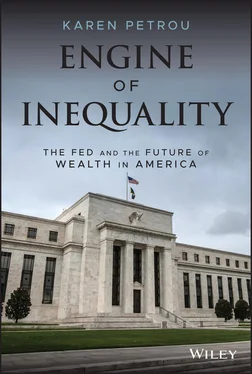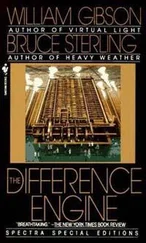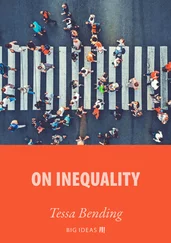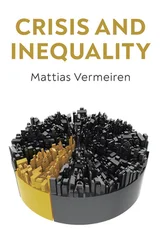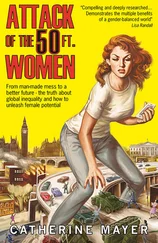Many dispute the economic wisdom and even the morality of this corporate edict, but it has nonetheless defined US business behavior before, during, and after the 2008 great financial crisis and again after COVID struck in 2020. Indeed, the profit-maximization, quarter-over-quarter ethos is one contributing crisis cause. However, unless or until investors relent, it prevails.
As a result, corporations through their actions convert economic theory into financial-market reality – and a very hard reality it became after post-crisis financial policy redesigned finance. The Federal Reserve bought trillions of dollars of assets from the banking system starting in 2009, ultimately growing its portfolio to $4.5 trillion. Although these purchases effectively countered the crisis at the start, they did not jumpstart the economy as the Fed hoped. Indeed, over time, the Fed's huge portfolio made inequality even worse because the long-term impact of this unprecedented policy was to boost equity prices in the stock market, not long-term, job-producing growth. 38
In 2020, the Fed repeated this playbook, this time throwing still more trillions into the financial market. As a result, stock markets bounced back from the brink in record time even as American unemployment continued to skyrocket to levels not seen since the Great Depression of the 1930s, if then.
As the Federal Reserve sucked trillions of safe assets from the financial system, investors looked desperately for places to put their funds. Starved of Treasury obligations and even of the chance to earn a reasonable rate of return by putting money in the bank, investors had little choice but to head to the stock market or to high-risk assets promising returns above the Fed's low rates. All this demand boosted equity prices, which led to more demand and still higher stock prices. The more financial markets go up, the still better off the wealthy become, at least for as long as markets go up or the Fed prevents them from coming back down.
If all Americans owned stock, then all Americans would benefit from rising markets, but all Americans don't own stock; the bulk of household stock ownership – 86.5 percent – was in the hands of the wealthiest 10 percent of households, and the top 1 percent owns more than half of all US stock. 39
To be sure, many Americans owned stock in 401(k) plans and mutual funds. But wealth doesn't come from just owning stock; it's of course due to how much you own. The percentages showing that the rich benefit most from rising financial markets of course reflect the fact that stock ownership is best measured by the value of the shares each person owns, not by the number of people who own them.
As a result, Fed asset purchases stoked stock-market rises that dramatically increased the wealth of those able to invest in the stock market. From 2007 to 2019, the S&P index for stocks rose 77 percent; that is, an investor with $10,000 in the market at the start of the crisis would have $17,700 to show for it after these twelve years. As shown below, small savers who were not also stock-market investors were worse off than ever before. Wealth inequality was thus even worse than it was before 2008, and the Fed is to blame for at least part of it.
Even worse, the Fed's portfolio also increased income inequality. Looking out for themselves and working hard to comply with tough post-crisis rules, banks didn't just take the money and lend it out as the Fed's economic theories expected. More loans would have likely led to more jobs. Instead, banks took the money and then allocated it not to suit the Fed's monetary-policy theories, but rather to maximize profitability. Fearful of losing money if they made the growth-boosting loans predicted in Fed models, banks used the cash to buttress their reserves as higher capital requirements kicked in. Capital requirements demand that shareholder equity stand behind bank lending, making the cost of lending higher because investors have lots of places to put their funds to use if stock prices at banks fail to suit them. Whatever capital banks had to spare thus went into dividends or stock repurchases that made investors richer or, if market conditions didn't allow, then to backing “excess reserves” – that is, into deposits at the Federal Reserve instead of into loans to hard-pressed households trying to refinance their mortgages, put kids through school, or just make ends meet.
Of course, banks also lend to corporations. One might thus have thought – the Fed surely did – that banks wary of consumers would still lend to companies that then built plants and bought more equipment, stimulating the recovery as conventional thinking dictates. However, companies that got loans didn't boost economic growth; nonfinancial companies maximize profits at least as assiduously as banks. As a result, there was a giant spree of stock buybacks and other capital distributions that made shareholders richer, but kept the overall US economy in first gear. That's better than reverse, of course, but still nowhere near good enough to enhance equality.
To make matters even worse, wealth gains at the top 1 and 10 percent came largely at the expense of what we once quaintly called the middle class. Homes are supposed to be the bedrock of middle-class wealth, but they in fact do far less for wealth than owning stocks and bonds. As we'll see, house-price appreciation and equity free of debt is principally a rich household's reward. 40
And the Fed did more than stoke stock-market booms by stripping the financial market of trillions of dollars of assets once held by private investors. It also drove real (inflation-adjusted) interest rates below zero. Interest rates close to and sometimes even below zero on either a real or nominal (i.e., the rate on the posted sign) basis reverse the normal relationship between debtors and creditors. When rates fall below zero, the depositor pays the bank for the privilege of holding his or her money. Conversely, a borrower will actually owe less than he or she borrowed when paying back a loan with a negative interest rate.
When the Fed began to raise rates in 2015, these were still at or below real positive territory, with interest rates ever since hovering at just about a sliver above or below inflation. Rich investors can borrow cheaply at rates such as these and then invest in rising markets to make their returns still greater (if also riskier due to all this leverage). Average households don't play in the complex “carry-trade” or high-leverage arenas that benefit from ultra-low rates. They also often lack access to mutual funds or other investment vehicles that beat the Fed's low rates.
Instead, these households put whatever money they may have – and as we've seen it's not much – in the bank. Interest rates of 0.25 percent – not counting fees for bounced checks and other costs – made money in the bank a losing proposition for anyone without $10,000 or so to put aside.
A simple example shows why. Assume a parent saving for a child's education puts $2,000 a year in a savings account paying a 5 percent compound rate of interest for 20 years. At the end of 20 thrifty years, he or she has $69,438 to show for this in nominal terms. After accounting for 2 percent annual inflation, he or she has $49,598. As a result, $40,000 has earned an additional $9,598, or 24 percent. Now take that same $2,000 for the same 20 years – $40,000 – and the same 2 percent inflation. But instead of a 5 percent interest rate, the parent earns only the half of one percent interest rate paid on small savings since the financial crisis. Instead of $69,438, this parent has only $42,168. After accounting for inflation, that is only $30,120, almost 25 percent less.
Clearly, the Fed's long-term, low rates quashed the chances that an average household can save for a financial cushion against adversity, to fund a mortgage down payment, or to secure their retirement. A generation ago, it took only three years for a young family to fund a mortgage down payment. Before COVID set younger households still farther back, it took at least nineteen years, due in part to very low interest rates. 41
Читать дальше
